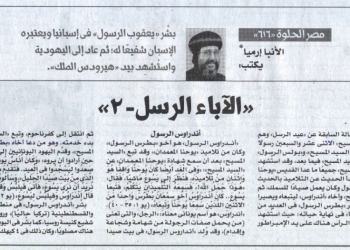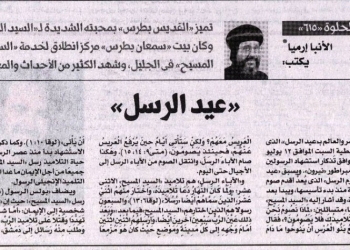In the previous article we continued talking about Az-Zahir the Caliph after the death of his aunt Sitt Al-Mulk, also during his reign Al-Kadir Bi-Allah the Abbasid Caliph died; Al-Qaim Bi-Amr Allah was his successor. In (427 AH- 1035 AD), Az-Zahir the Caliph died due to Ascites, his son Maad ruled after him and he was nicknamed Al-Mustansir Billah.
Al-Qaim Bi-Amr Allah the Caliph (422-467 AH) (1031-1075 AD)
He was Abu Jaafar Abdallah, the son of Al-Qadir the Caliph. He ruled after his father’s death and was nicknamed Al-Qaim Bi Amr Allah. His era started with turbulence and strife in some states-owned to the Abbasid state- like Baghdad which provoked the greed of those who had ambitious to take over some of the parts of the Abbasid state, in addition to the greatness of the Seljuk- they were Turkish descendants.
Hassan Khalifa mentioned at that time: “Some people had the greed to take over the outskirts of the state, the greatness of Seljuk increased in the Mashriq, they marched towards Iraq and waited for a chance to enter Baghdad and take it by force from the Sultans of the Buya. They achieved their goals and destroyed the Buya state. Moreover they were able to substitute it in both authority and power; and they managed the affairs of the Abbasid Caliphate.”
The Authority of the Buya
The Abbasid Caliph was of great weakness to the extent that the Buyid Sultan was controlling his judgments and decisions as he liked. Galal Al-Dawla, son of Bahaa Al-Dawla the Buya took over the rule in Iraq in the era of Al-Qiam Bi-Amr Allaha.
During that age the state system was disrupted and there was a shortage of money even the Caliph was not able to pay the wages of the soldiers which led to their rebel against him in (426 AH-1035 AD), they cut off roads, robbed houses and safety was lost in the state.
In (432 AH-1040 AD), the Buyid Sultan asked the Caliph to entitle him as “king of kings”, but the Abbasid Caliph did not agree at first, later on he succumbed and granted him that title.
In (435 AH- 1043 AD) Galal Al-Dawla died, his brother’s nephew Abu Klijar Al-Marzuban, son of Sultan Al-Dawla was his successor and he was nicknamed Mohy El-Din; turbulences kept occurring during his reign whereas huge disputes happened between Turks and Daylamites and things went south.
In (440 AH- 1048 AD), Mohy El-Din died and his son Abu Nasr Khesro Fayroz was his successor and he was nicknamed the Merciful King, and he had authority in Iraq, Khuzestan, and Basrah. During his reign the power of the Buya ended and the Abbasid Caliphate was submissive to the power and authority of Seljuks.
The Seljuk State
The Qiniq tribe was considered the origin of Turkish Seljuks who migrated to Anatolia until they settled some time in Gorgan and Tabaristan whereas they served Beg the Turkish king. Its chief was Seljuk Bin Duqaq who was characterized by deep intelligence and that was why he was presented before the king and served until he was able to become the leader of the army.
Seljuk was characterized also by power in addition to the obedience of all the members of the tribe to him which caused King Beg to be concerned of Seljuk’s power and that was why he plotted for Seljuk’s death. When Seljuk knew what the king was up to; he quickly left and went to Khagenda city which was located near Syr Darya River and that area’s religion was Islam.
He carried out wars on pagan Turks in Turkestan area. Seljuk died and left three sons who were: Arslan, Mikail, and Musa. And his son Mikail left sons as well who were: Bejo, Tughril Beg and Chaghri Beg Dawud who moved between the countries and fought Ghaznavids, some vicious wars that ended up with the victory of Seljuks and Dawud was able to take over Merv and he was entitled “the king of kings”; whereas Tughril Beg was able to take over the cities of Khorasan in addition his authority expanded to some states until it reached the outskirts of Iraq that was groaning under the pressure of great turbulences.
It was mentioned regarding those incidents that: “Tughril Beg entered Iraq with great forces as the Caliph was screaming for his help! Tughril wished to enter Baghdad and that was why he responded to the Caliph…On 25th Moharam in (447 AH-1055 AD); Tughril Beg entered Baghdad and arrested the last Sultan of the Buya who was entitled as “The Merciful King” and he managed the affairs in the capital of the Caliphate. That was how the Buya state has fallen and the Seljuk state substituted it in matters of power and authority.”
Stories about beautiful Egypt never end!
General Bishop,
Head of the Coptic Orthodox Cultural Center


 العربية
العربية











